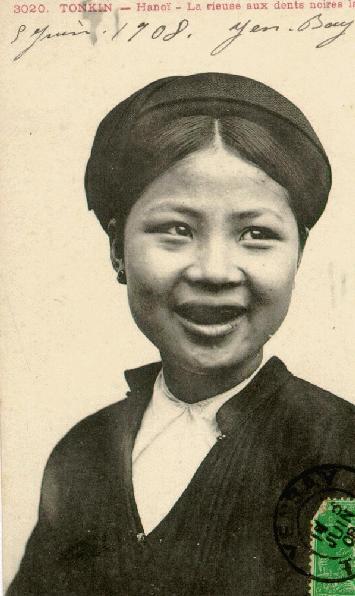During the 16th century in medieval Japan, wealthy married women embraced a unique trend known as ohaguro, which involved blackening their teeth. This practice wasn’t just a passing fad but a symbol of status and beauty. The method was quite straightforward: iron fillings were soaked in tea or sake, causing them to oxidize and turn black.
Contrary to modern beauty standards, having blackened teeth was considered highly desirable. It was believed that this aesthetic enhanced a woman’s appearance, representing unity within marriage and fidelity to her spouse.
In the Victorian Era
Back in the day, having blackened teeth was a sign of beauty, and here’s why. Sugar, a luxury back then, was a symbol of affluence. Only the wealthy could indulge in this expensive import, leading to tooth decay. Surprisingly, these decayed, blackened teeth became a status symbol. What we might consider poor dental hygiene now was a display of opulence in those times.
Interestingly, pristine, white teeth were associated with the less affluent, who couldn’t afford such extravagances as sugar. This inverse association between dental appearance and social status shaped beauty standards of the time, with blackened teeth being admired as a mark of wealth and privilege.
Conversely, those from lower socioeconomic backgrounds who couldn’t afford sugar or the subsequent dental problems it caused often had relatively healthier, whiter teeth. As a result, pristine white teeth became associated with poverty or lower social status.

Background
Teeth blackening, also known as teeth lacquering, has been a prevalent custom in various cultures across Southeast Asia, Oceania, and parts of Japan and India. This practice was common among Austronesian, Austroasiatic, and Kra-Dai-speaking peoples. Even in the Americas, groups like the Shuar people in northern Peru and Ecuador practiced teeth blackening.
Typically carried out during puberty, teeth blackening was considered a symbol of maturity, beauty, and civilization. It was believed to distinguish humans from animals. Often performed alongside tooth sharpening, dental evulsion, and other forms of body modification like tattoos, teeth blackening held significant cultural significance.
Early European explorers and colonists viewed teeth blackening and filing with a mixture of fascination and disapproval, highlighting the cultural divide between different societies’ beauty standards and traditions.
Avid Writer with invaluable knowledge of Humanity!
Upcoming historian with over 30 million views online.
“You make your own life.”





